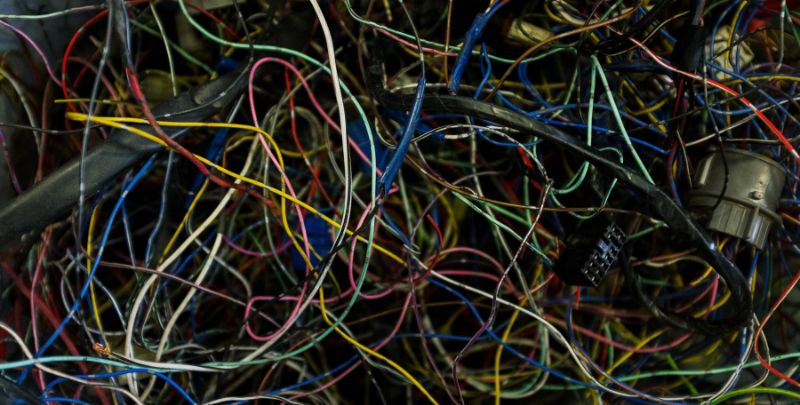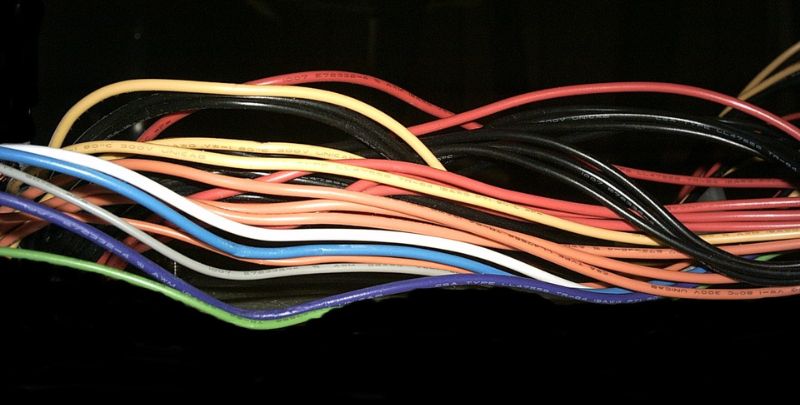Electrical Wiring Colours and What They Mean in Australia

We’ve all seen those scenes in our favourite action movies. The tension is ramped up to the max as the hero tries to defuse a potentially perilous situation, while their sidekick urges them to cut this colour wire or not cut that colour wire.
We certainly hope none of you find yourself in a situation as tense as this. However, you may find yourself attempting some necessary DIY electrical work. Perhaps you’re attempting some light switch wiring or installing a new power point. No matter the job, you’ll likely be looking at a handful of wires in a variety of colours and needing to know which colour is the one that will make or break the job for you.
So let’s take a closer look at current standards for Australian wiring colours and what they mean.
Navigating Your Way Through the Electrical Wire Rainbow
Unscrewing a power point cover or lighting fixture and encountering a collection of electrical wires that seemingly covers the entire colour spectrum might seem a little intimidating. Especially to an inexperienced DIYer. But each colour-coded wire serves a specific purpose, and each colour tells an experienced electrical contractor what that purpose is.
Colour-coded electrical wiring has long been an established practice, but in Australia those codes have undergone significant changes and updates over the years – most recently in 2018. The rollout of national standard AS/NZS 3000:2018 Electrical Installations in that year saw Australia’s wiring rules become more aligned to the standards adopted in Europe and the United Kingdom.
The most notable issue with these changes was that they didn’t apply to electrical wiring already installed prior to 2018. What might have been seen as a neutral wire colour before the standards update might now in 2022 be an active wire. This meant that any electrician working on an existing installation would need to be knowledgeable in both the new and old standards, to both determine the correct function of the wire and safely identify and address any faults.
While we’d recommend contacting an experienced electrical contractor to take care of any wiring issues, simply to minimise the risk of complications or things going wrong, Upside Down will tell you all you need to know to safely navigate the electrical wire rainbow.
So, What Do All the Wires Do?
So we know that each wire serves a particular function, but what might those functions be, and how do the various colours differentiate between them? Let’s explore further, first looking at the different types of electrical wiring.
Active Wires
Also known as hot wires due to the live electrical current that runs through them, these wires are responsible for delivering power from the meter box to the various switches, power points and appliances throughout your home. In a three phase or multiphase electrical system, the multiple active wires will each bear different colours to aid in determining the function and intended destination of the current.
Neutral Wires
If an active wire serves to transport power from the meter to the home, a neutral wire directs power in the opposite direction – sending the used electricity back to the power source. Neutral wires act as conductors, complete the circuit between the power source and the destination, and also help to prevent circuit overload.
We highly recommend taking extra care around neutral wires as they can spark an electric shock if not treated cautiously.
Earth Wires/Ground Wires
Though active and neutral wires may appear in different colours depending on the standard that they comply with – more on that later – earth wires (also known as ground wires) will always be green and yellow. However older pre-2018 earth wires may just be green in colour. The function of an earth wire is to safeguard against electric shock, diverting a live current into the earth/ground – hence the name – and clear of any appliances or power points.

And What Colours Are These Electrical Wires?
The electrical wiring colours as established by the most recent standard in 2018 are as follows:
Single Phase Wiring
- Active / hot wires – brown
- Neutral wires – blue
- Earth / ground wires – green and yellow
Three Phase/Multi Phase Wiring
- Phase 1 – brown
- Phase 2 – black
- Phase 3 – grey
- Neutral wires – blue
- Earth / ground wires – green and yellow
Single phase is most commonly found in houses, while three phase / multi phase wiring is better suited to buildings and businesses that require greater volumes of power to run heavy machinery or large appliances.
Pre-2018 Electrical Wiring Colours
As mentioned earlier, the updates to electrical wiring colour standards in 2018 meant that any electrical wires installed prior to that year – effectively a vast majority of Australian homes – would be a different colour. The old electrical wiring colours Australia followed immediately before 2018 were as follows:
Single Phase Wiring
- Active / hot wires – red
- Neutral wires – black
- Earth / ground wires – green
Three Phase/Multi Phase Wiring
- Phase 1 – red
- Phase 2 – white
- Phase 3 – blue
- Neutral wires – black
- Earth / ground wires – green
You could go earlier even still, prior to the turn of the century for example, and find a different combination of colours yet again.
Should Electrical Work Be Attempted in a DIY Capacity?
So, given the various permutations of colours among the electrical wires that rival the classic Mastermind board game (look it up), should you really be attempting to complete electrical work as a DIYer? You might feel like you’d be okay with testing electrical fault finding techniques or even installing new lighting in your living room.
But if you can’t differentiate between active and neutral wires with complete certainty, or determine what colour is the active wire in your home’s electrical system, the safest and best approach is simply to book an Upside Down electrical contractor to complete the work for you.
With their extensive knowledge of electrical wiring colours, Australian standards and regulations, and comprehensive experience with general home rewiring services, they are best equipped to help you get the best outcome in the safest way possible.
A licensed electrical contractor will also be protected under public liability insurance, and the work will be covered under a 12-month workmanship warranty so you won’t be unnecessarily out of pocket if any follow-up repairs are required. It simply makes sense.
Please note: This information is provided for advice purposes only. Regulations differ from state to state, so please consult your local authorities or an industry professional before proceeding with any work. See our Terms & Conditions here.